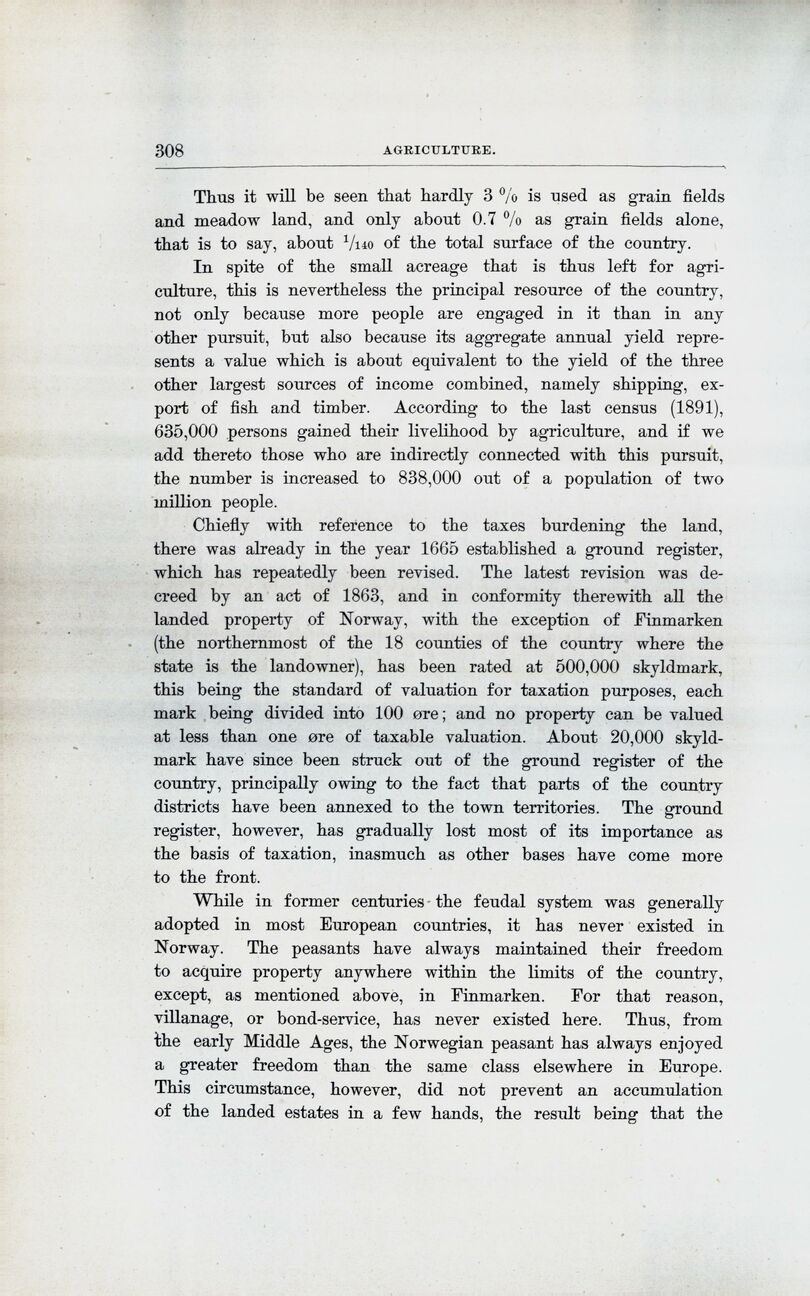
Full resolution (JPEG) - On this page / på denna sida - Agriculture, by G. Tandberg

<< prev. page << föreg. sida << >> nästa sida >> next page >>
Below is the raw OCR text
from the above scanned image.
Do you see an error? Proofread the page now!
Här nedan syns maskintolkade texten från faksimilbilden ovan.
Ser du något fel? Korrekturläs sidan nu!
This page has been proofread at least once.
(diff)
(history)
Denna sida har korrekturlästs minst en gång.
(skillnad)
(historik)
Thus it will be seen that hardly 3 % is used as grain fields
and meadow land, and only about 0.7 % as grain fields alone,
that is to say, about 1⁄140 of the total surface of the country.
Tn spite of the small acreage that is thus left for
agriculture, this is nevertheless the principal resource of the country,
not only because more people are engaged in it than in any
other pursuit, but also because its aggregate annual yield
represents a value which is about equivalent to the yield of the three
other largest sources of income combined, namely shipping,
export of fish and timber. According to the last census (1891),
635,000 persons gained their livelihood by agriculture, and if we
add thereto those who are indirectly connected with this pursuit,
the number is increased to 838,000 out of a population of two
million people.
Chiefly with reference to the taxes burdening the land,
there was already in the year 1605 established a ground register,
which has repeatedly been revised. The latest revision was
decreed by an act of 1863, and in conformity therewith all the
landed property of Norway, with the exception of Finmarken
(the northernmost of the 18 counties of the country where the
state is the landowner), has been rated at 500,000 skyldmark,
this being the standard of valuation for taxation purposes, each
mark being divided into 100 øre; and no property can be valued
at less than one ore of taxable valuation. About 20,000
skyldmark have since been struck out of the ground register of the
country, principally owing to the fact that parts of the country
districts have been annexed to the town territories. The ground
register, however, has gradually lost most of its importance as
the basis of taxation, inasmuch as other bases have come more
to the front.
While in former centuries the feudal system was generally
adopted in most European countries, it has never existed in
Norway. The peasants have always maintained their freedom
to acquire property anywhere within the limits of the country,
except, as mentioned above, in Finmarken. For that reason,
villanage, or bond-service, has never existed here. Thus, from
the early Middle Ages, the Norwegian peasant has always enjoyed
a greater freedom than the same class elsewhere in Europe.
This circumstance, however, did not prevent an accumulation
of the landed estates in a few hands, the result being that the
<< prev. page << föreg. sida << >> nästa sida >> next page >>